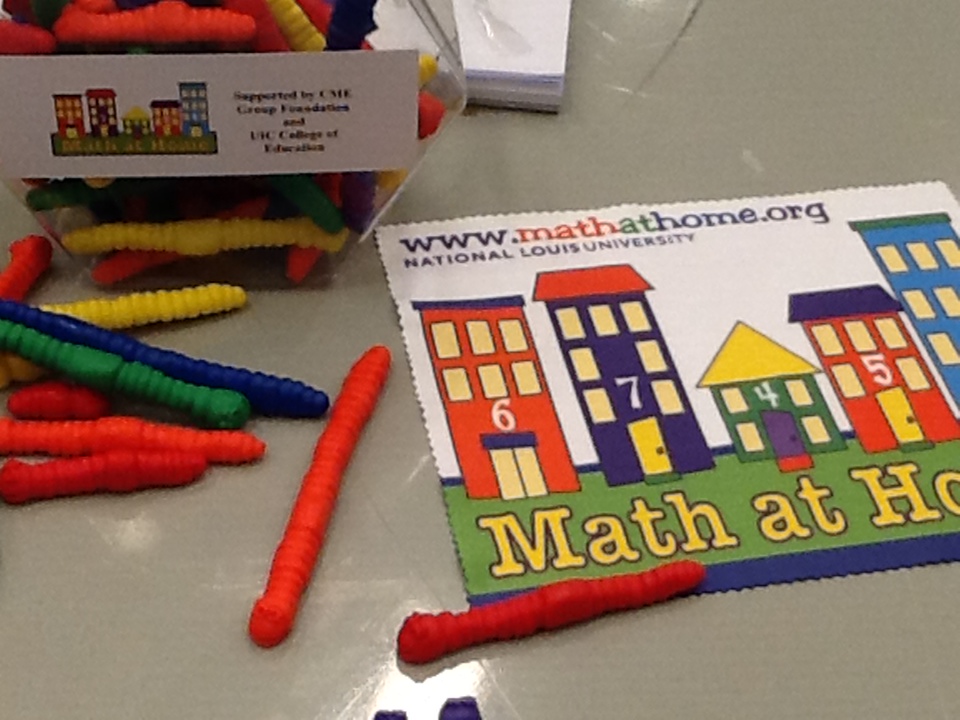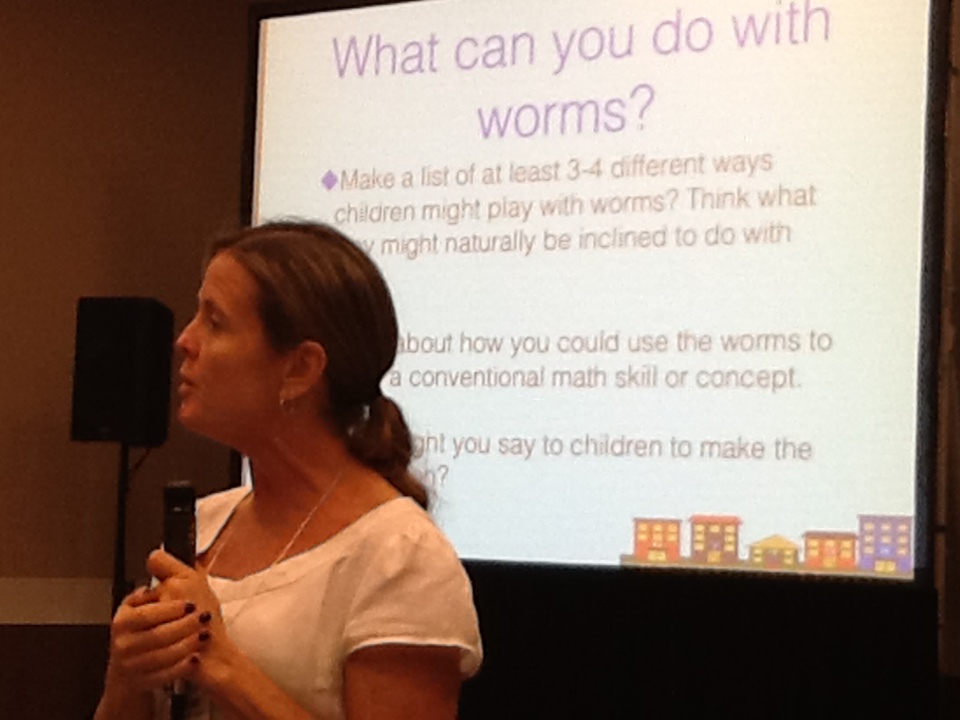Worms, Worms, Worms
Last week, three of the Early Math Counts folks (including me) went to Dallas for the NAEYC Annual Conference and Expo. We spoke on Wednesday to a wonderful and receptive audience of about 45 attendees. We began by detailing the history of the Early Math Counts project and spent a little bit of time presenting some of the research connected to early math learning.
My part was the most fun. I did a short activity with the attendees using small buckets of colorful plastic counting worms. We discussed the different ways teachers might present new manipulatives with children either by presenting them first with detailed explanations about what they are and how to use them, or by presenting them as a new material and allowing the children to explore and uncover their uses on their own. For the purposes of the day’s activities, I explained that we would operate as if we were exploring them for the first time all on our own.
I don’t know how well you can see the directions on the screen behind me, but the activity went something like this:
1. Make a list of 3-4 different ways children might play with worms. Think what they might naturally be inclined to do with them.
2. Think about how you could use the worms to teach a conventional math skill or concept.
3. What might you say to children to make the connection?
The attendees went to work, opening their worms and playing.
 After spending a few minutes exploring the worms, I asked the audience to call out the different ways they thought children might play with the worms. They had wonderful ideas. Some thought children might sort them, or line them up. Others thought that they might use them to measure themselves if they lay down on the carpet and line them up end to end. Another woman said she thought her kids would use them for pretend play, since they come in different sizes and they children might create families with them.
After spending a few minutes exploring the worms, I asked the audience to call out the different ways they thought children might play with the worms. They had wonderful ideas. Some thought children might sort them, or line them up. Others thought that they might use them to measure themselves if they lay down on the carpet and line them up end to end. Another woman said she thought her kids would use them for pretend play, since they come in different sizes and they children might create families with them.
All of these were great ideas and reasonable as well. I could see children using them in these ways and many others. Next, we talked about how teachers can support these play-based mathematical activities as they unfold in the classroom by incorporating math vocabulary and extending the play.
We then ran out of time.
Do you have any great ideas for playing with these worms? How would you support the math concepts? How would you help make the connections?
